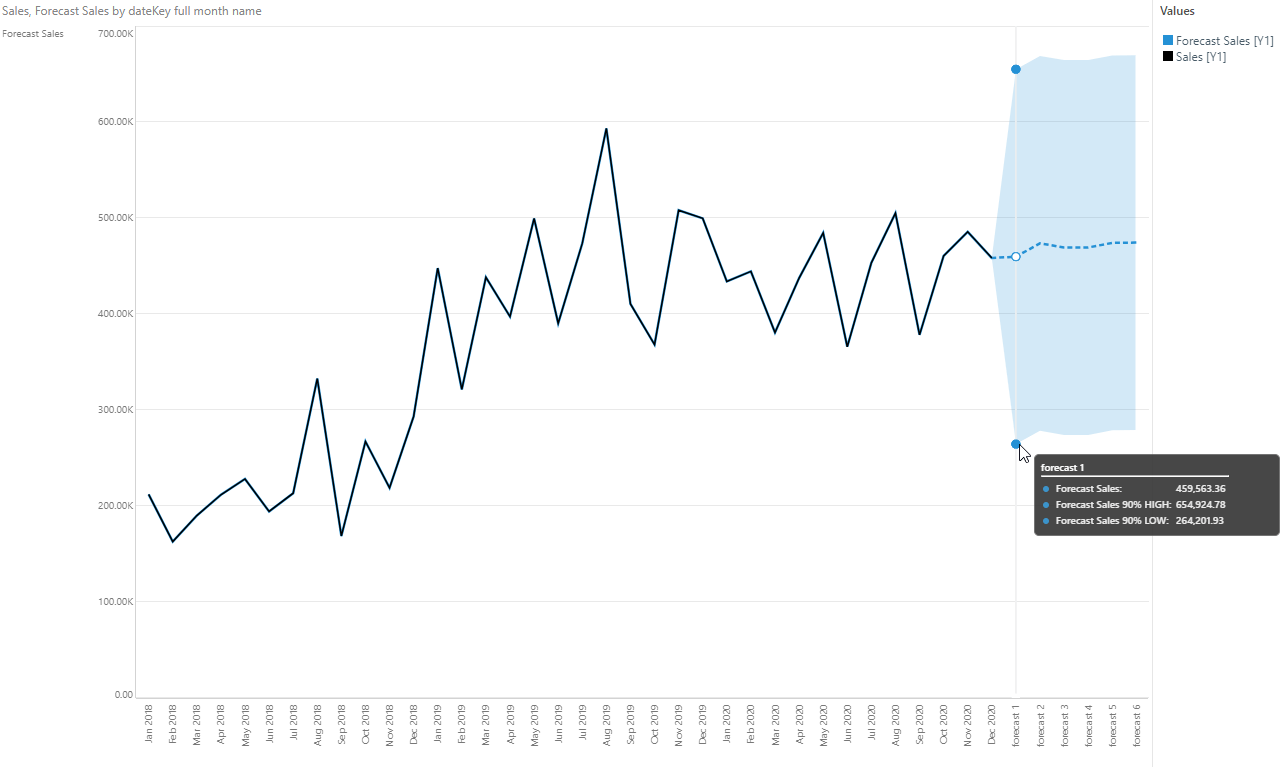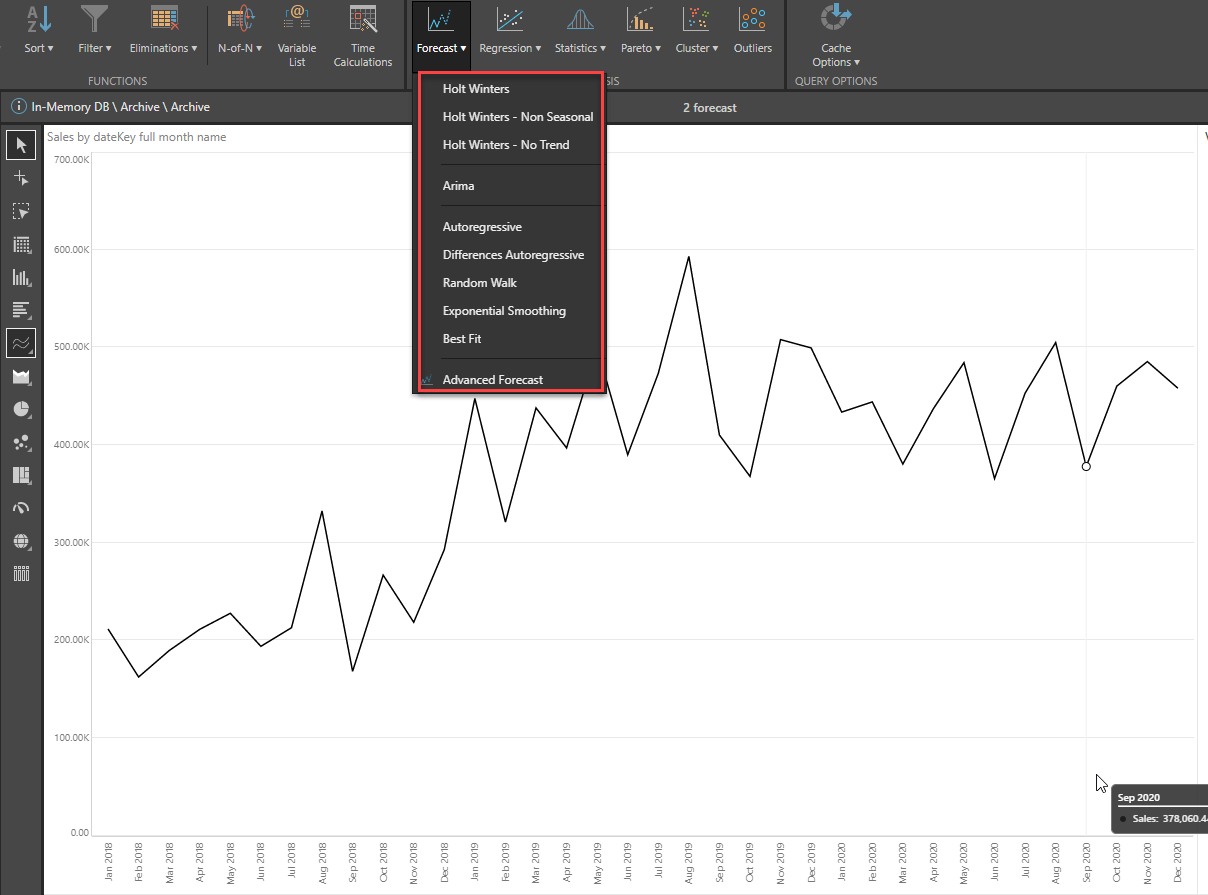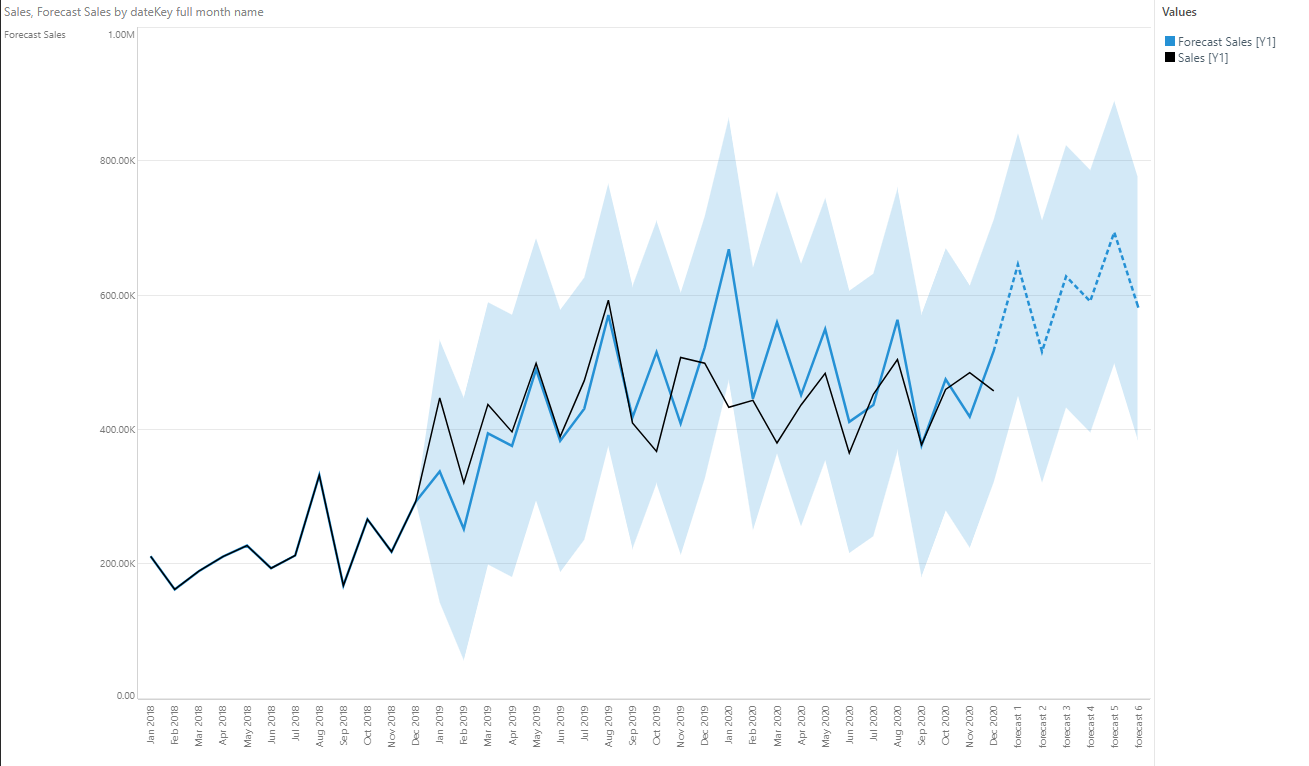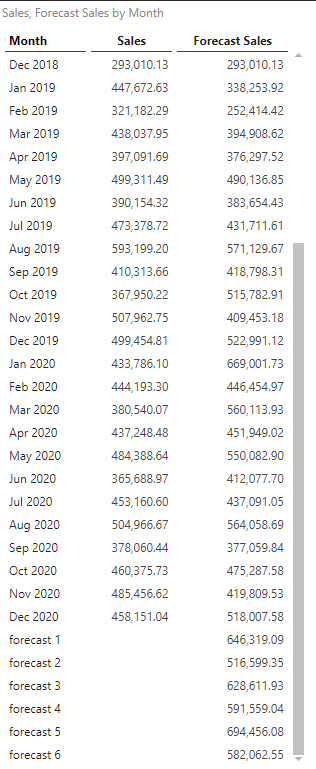Forecasting is a machine learning technique that uses historical data as inputs to determine expected future trends. Forecasting forms the basis for developing business strategies that include important financial and operational considerations—and decisions—so it’s crucial for analysts to use proper methods to perform the forecasts.
However, many organizations struggle to integrate complex forecasting algorithms from third-party forecasting tools into their BI and reporting functions. In contrast, Pyramid provides a built-in, user-friendly forecasting function. With Pyramid, users can start with a Pyramid-recommended forecast that auto-selects the most accurate algorithm, or they can execute more advanced forecasts that include custom Python or R logic. In this three-part blog series, I will discuss Pyramid’s comprehensive approach to simple forecasting, advanced forecasting, and Python-based forecasting.
The problem
As forecasting is an essential part of reporting, forecasting functionality must be fully integrated with the BI tool used to create dashboards and reports. However, while most BI tool suppliers offer some degree of forecasting capabilities, it’s often contained within a proprietary “black box,” meaning the methodology used to produce the desired analysis is obscured. This diminishes the confidence of business leaders making consequential decisions using this data. Further, while some BI tools offer a best-fit method, few tools offer options to configure distinct algorithms. And very few offer an accessible script-based forecasting option that can be re-used for future forecasts.
Pyramid’s solution
Pyramid’s fully integrated forecasting solution uses a simple point-and-click methodology to provide sophisticated forecasting algorithms within existing reports and dashboards. Users can select from among eight out-of-the-box, recognized forecasting methods. They can also choose a “best-fit” option that tests all methods; Pyramid automatically determines and assigns the most accurate forecast.
In addition, Pyramid provides deeper options, allowing users to further tweak the pre-configured models using multiple parameter choices. Since Pyramid directly queries the database, users can run forecasts on any dataset, regardless of whether the data source is SQL- or MDX-based, obviating the need to ingest data before performing forecasting functions.
Finally, advanced users—such as an IT developer—can write custom Python and R scripts to generate their own appropriate solution, as discussed in more detail in a future blog.
Business case
Lauren is a BI Analyst for M&N Manufacturers. They use SAP BW to analyze their SAP ERP and Pyramid for their BI development and analytics. Lauren wants to project product sales for the next six months directly off her BW Sales InfoCube.
After displaying the sales figures from January 2018, Lauren simply clicks on the forecast button. In the background, Pyramid chooses an accurate forecast method based on how accurately this method was able to forecast using historical data.
It then plots the forecasted data with maximum highs and lows using a 90 percent predictability confidence level, as seen by the blue shaded area.

The default selection is the best fit option, but there are eight other methods that can be selected if preferred.

Since she has at least 12 months of sales data, Lauren can use the “Calculate History” option to see the forecasts that would have been made. She can then measure them against the actual sales to see how accurate the forecast was.

Lauren can flip between line, bar, and grid visualizations, and even save the forecast results in any visualization she chooses.

Summary
Forecasting uses historical data to determine future trends to help guide future business strategies. While many BI tool vendors do provide forecasting capabilities, they use a simplified “black box” method, keeping customers in the dark about the actual methodology used. In contrast, Pyramid offers a simple approach to accessing sophisticated forecasting algorithms. Users can choose from multiple well-known forecasting methods, as well as a default “best-fit” option that automatically chooses an accurate method for the provided dataset. Advanced forecasting options allows users to tweak the pre-configured models using multiple parameter choices. And finally, custom Python and R scripts can be implemented to provide bespoke solutions, providing a comprehensive, flexible forecasting solution.
















